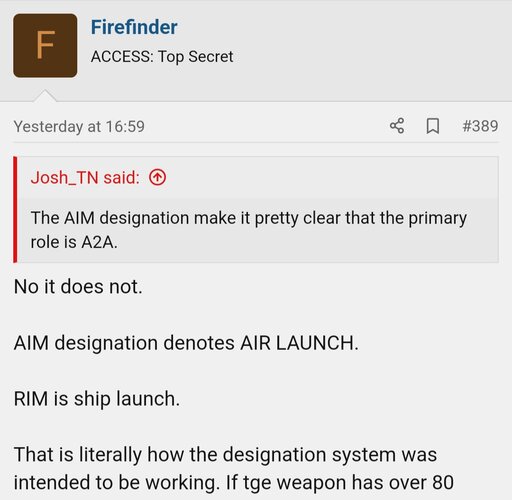Manuducati
ACCESS: Secret
- Joined
- 25 November 2020
- Messages
- 328
- Reaction score
- 1,056
No it does not.
AIM designation denotes AIR LAUNCH.
RIM is ship launch.
That is literally how the designation system was intended to be working.
AIM stands for "Air Intercept Missile" so yes, it does mean exactly that.
First letter is for the launch platform (A for air, B for ground, R for surface ships, U for submarines and so on).
Second letter is for the type of target (I for Intercept/aerial target, G for ground/surface...)
And M for the type of weapon, missile here of course.

